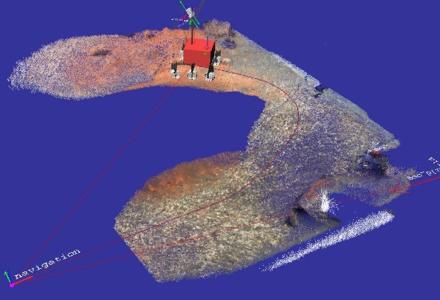Space Automation Robotics General cONtroller (SARGON)

The objective of the activity is to a) produce an assessment of a number of the most-used Open-Source robot controller software (OSRCS) with respect to a number of space application requirements;b) identify the most promising robot controller software (RCS);c) implement and deliver a reference implementation of the RCS.
For the past 20 years ESA has invested in the development of robot systems, in support of human spaceflight and exploration. A robot relies heavily on specific software, called robot controller software (RCS)? or robot operating system, that can provide? tight coordination of perception, reasoning and motion functions. In these years several tens of millions of Euros of RD and project budgets have been spent in developing RCS for various purposes. While this has allowed to progress space robot technology and projects, the approach used in the past is not sustainable. Almost none of prior RD/project RC developments have been reused into subsequent activities. For reasons of protection of IP, insufficient documentation and application development support, and lack of knowledge preservation, basic RC software had to be re-developed.In the mean time, thanks to the open software movement, a number of open-source RCS have been developed and have attracted large user communities. These systems are used in thousands of robotics RD projects but? also in small industrial applications. Open-source RCS offers the properties that ESA RC software never managed to have: no IP restrictions, good documentation, varied application development support and large user base. The question the study aims to address is: do/can open-source? systems meet the compulsory space requirements of small resource usage, high reliability, availability, maintainability and safety?This work is expected to be relevant for orbital robotics as well as lunar robotic exploration missions.?The activity shall:a) produce an assessment of a number of the most-used Open-Source RCS (OSRCS) with respect to a number of space application requirements such as:1. applicability throughout the development process, including prototyping and early development activities, of? space robotic systems;?2. performance: RCS for space need real-time performance? (milli-second in case of robot arm to sub-second in the case of rovers);?3. resource usage: space systems cannot rely on multi gigahertz processors and gigabyte-sized memory; a RCS for space must work with limited processing power (200-300 MHz is the current state of the art) and << 1 Gbyte memory;?4. reliability, availability and safety: an RCS for space must support software verification methods that guarantee that the system is always up and running and delivers the expected performance;?5. availability and integrity of algorithms within the user community.6. compatibility with automated verification techniques and methods for guaranteeing "correctness by design", in view of applicability of systems with significant autonomy.7. heritage and maturity within the space domain as well as the wider research communities.b) identify the particular RCS that has best potential for space use, by performing a trade off of the different RCS. The tradeoff shall be based on the RCS measurable properties, their internal characteristics and the software validation technology that best suits them. c) provide a reference implementation (tailored for the common functions of two use case robotics applications (Eurobot and Moon rover).
